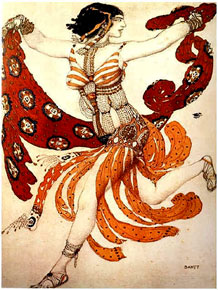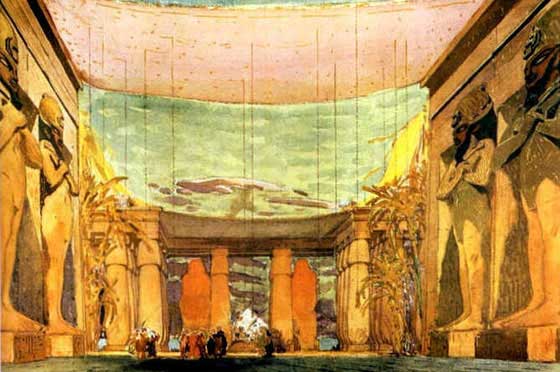
Serge Lifar was born on April 2, 1903 in Kiev, Ukraine and trained there by Bronislava Nijinska. Lifar was dynamic and controversial in his personal life. He was accepted into the Ballets Russes in 1923. Serge Lifar's career was delayed a year because he did not accept Serge Diaghilev's invitation to breakfast. Diaghilev insisted that Lifar's training continue with Enrico Cecchetti, Nicolai Legat and Pierre Vladimirov. Lifar was known for his notorious and unscrupulous displays of ego. While partnering Alicia Markova at London's Drury Lane Theatre, his extremely unprofessional jealousy of her triumph caused a scandal. In 1938, they danced again when Markova was making her debut in America. The ballet was almost ruined by Lifar's attempts to steal scenes, causing a critic to write that his performance in Giselle would justify changing the name of the ballet to Albrecht.
Lifar eventually replaced Anton Dolin as Diaghilev's favorite, when Dolin left to dance in Cochran's Revues with Vera Nemtchinova. Diaghilev made sure Lifar continued his daily classes with Enrico Cecchetti. Wherever Lifar went, Cecchetti was there to give him lessons. Lifar was the last of the Ballets Russes' Premier Danseurs, although Dolin did return to the company as one of the stars. Two of Lifar's greatest achievements as a dancer in the Ballets Russes were in Balanchine's Apollo and The Prodigal Son.

After Serge Diaghilev's death in 1929, Lifar became Premier Danseur of the Paris Opera Ballet, whose reputation had declined since the Victorian era. By 1933, he had become its Director and Professor of Dance. In 1939, Lifar joined the Ballet Russe de Monte Carlo where he again danced with Alicia Markova, this time at London's Covent Garden.
Lifar held the position of Director at the Paris Opera Ballet for 20 years, creating 90 percent of the choreography and dancing many leading roles. Although he himself was trained by Cecchetti, he replaced the Italian technique at the Paris Opera with the modern Russian Vaganova School, named for the great Kirov teacher Aggripina Vaganova. He remained as director of the Paris Opera Ballet until 1945, when charges of collaboration with the Germans caused him to leave and become director of the Nouveau Ballet de Monte Carlo. Lifar, cleared of the charges and given a year's suspension, returned as director of the Paris Opera Ballet in 1947. In 1949, he danced again, and his last performance at the Opera was as Albrecht in ''Giselle'' in 1956. He resigned as director in 1958, although he was briefly re-engaged as choreographer in 1968.

In the summer of 1994 on the stage of the National Ukraine Opera the First International Ballet Contest was held named after Serge Lifar. The new contest happened to be unique. For the first time in Europe young ballet artists and balletmasters contended simultaneously. The Sixth Lifar International Ballet Competition was held in April, 2006.


















